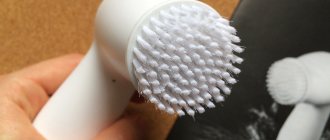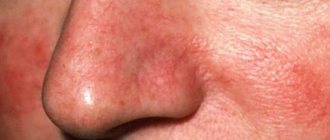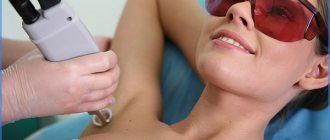Line of multi-acid peelings MG Peel System
The MG Peel System line of professional multi-acid chemical peels was created to correct aesthetic skin problems as part of complex procedures in beauty salons and medical clinics.
Indications for the use of multi-peelings
- Photoaging
- Chronoaging
- Shallow wrinkles, including “crow’s feet” in the eyelid area
- Hyperkeratosis
- Violation of skin microrelief
- Seborrhea
- Enlarged pores in the T-zone
- Acne
- Post-acne
- Hyperpigmentation
MG Peel System peels are superficial. At the same time, they provide targeted, targeted correction of a specific problem and a good visible result after the first session. The maximum result is achieved after a course of procedures.
The concentration of acids in multi-peelings is from 5 to 40% at pH 3
. Thanks to this pH level, acids penetrate the skin more slowly, without causing an acute reaction or complications. And it’s easy for a specialist to control the process, monitor the reaction of the epidermis and get the desired result.
Each product in the line is carefully thought out and ideally balanced in terms of the composition of the acids in the complex and the mechanism of their work. Acids in multi-peelings vary in molecular size, depth of penetration into the skin and intensity of impact. Working together, they complement and enhance each other's properties, allowing you to achieve impressive results in a short time.
The gel texture guarantees comfort during work for both experienced specialists and novice cosmetologists. The peeling is easily applied to the brush and distributed over the skin without spreading.
MG Peel System allows cosmetologists to select the optimal peeling individually for each client, depending on the type and condition of the skin, aesthetic problem, time of year and the desired result. And all this is within one line.
Multi-acid peels, even at a concentration of 40%, act on the skin as gently as possible. The risk of complications and adverse reactions (burns, severe hyperemia, frost, severe peeling) is minimized. If the cosmetologist follows the procedure protocol, the client can go to work or an event immediately after peeling. Despite this, multi-peelers are strictly professional preparations
and are intended for specialists who can determine the skin's reaction to acid and guarantee the safety of the procedure.
Healing period
There is no particular concern during the recovery period after exfoliation of the prx t33 chemical peel.
In some cases, slight peeling and redness may occur, but these symptoms resolve on their own without additional medication.
To speed up the recovery process, you must adhere to certain care and lifestyle recommendations.
- For the first few days, use creams and fluid for dry skin from Wiqomed according to the manufacturer’s instructions;
- You should wash your face exclusively with “soft” water;
- Apply sunscreen for a week before going outside;
- Avoid overheating or exposure to strong wind/frost;
- Carefully monitor the level of moisture in the skin, drink more fluids to normalize the body’s hydrobalance;
- Avoid visiting the solarium, sauna, and swimming pool.
Peeling gel ANY-Time Control
The most delicate line peeling. All-season, does not cause photosensitivity, can be used during the season of high solar activity. Suitable for sensitive skin. Best suited for oily problem skin.
- Acids
: salicylic, mandelic, lactic. - Concentration and pH
: 5%, pH 3. - Volume
: 100 ml. - Indications
: photoaging, chronoaging, shallow wrinkles, hyperkeratosis, seborrhea and hyperpigmentation. - What it does
: balances the activity of the sebaceous glands, reduces skin oiliness, deeply cleanses pores, fights comedones, acne and post-acne, moisturizes, brightens.
Ingredients (INCI):
Aqua, Ethoxydiglycol, Salicylic acid, Mandelic acid, Sodium Lactate, Hydroxyethylcellulose. BUY >>
Contraindications
Despite the fact that all-season peeling is considered a gentle rejuvenation method, it has a number of limitations. Thus, the main contraindications include such pathological conditions as:
- acne;
- various skin lesions of viral , bacterial and fungal origin;
- fresh abrasions and wounds in areas requiring treatment;
- tendency to develop an allergic reaction to the components present in the composition;
- psoriasis , eczema and other dermatological skin diseases;
- recent surgery in the area to be treated chemically;
- infectious pathologies occurring in acute form.
On this topic
- Peeling
Peeling in spring and summer - careful treatment and gentle approach
- Inna Viktorovna Zhikhoreva
- June 19, 2020
In addition, the procedure is prohibited during pregnancy and breastfeeding.
Before deciding to use such a product, it is advisable to first consult a cosmetologist.
Peeling gel KERATO-Skin Control
Universal peeling for all skin types. Use independently and as a preparation step for medium peels. Can be used in the eyelid area.
- Acids
: glycolic, salicylic, citric, lactic, malic, tartaric. - Concentration and pH
: 35%, pH 3. - Volume
: 100 ml. - Indications
: hyperkeratosis, uneven microrelief, seborrhea, post-acne, photoaging, wrinkles, hyperpigmentation. - What it does
: intensively exfoliates, renews, regenerates, smoothes, moisturizes, brightens.
Composition (INCI)
:
Propyleneglycol, Glycolic Acid, Aqua, Salicylic acid, Sodium lactate, Glycerin, Citric acid, Lactic acid, Malic acid, Tartaric acid, Citrus medica limonum (lemon) fruit extract, Pyrus malus (apple) fruit, Saccharum officinarum (sugar cane) extract , Vaccinium myrtillus extract, Vitus vinifera (grape) fruit extract, Hydroxyethylcellulose.BUY >>
All about chemical peels: types, procedure protocol, how often to do it
back to news list 08/11/2020 127
One of the most popular and frequently used types of peeling in cosmetology is chemical peeling. It is suitable for everyone, regardless of age and skin type, you just need to choose the composition and concentration of the solution.
Based on the depth of impact, chemical peels are divided into superficial, medium and deep (for more details, see our previous article).
In this material, we will analyze in what cases acid-based peels are used, how the procedure works, and whether it can be done at home.
Superficial chemical peels
Superficial chemical peeling is a procedure in which the stratum corneum of the epidermis is carefully removed.
Superficial acid peels are used to improve skin color and texture, reduce the appearance of pores, prevent acne, and prepare for medium peels.
Popular superficial chemical peels:
- Fruit peeling (fruit acid peeling, AHA peeling) – peeling using fruit acids: glycolic, lactic, grape, mandelic and others. A gentle product for rejuvenating, cleansing, and improving skin structure.
- Milk peeling – peeling with lactic (lactanoic) acid, suitable for dry skin prone to irritation, as well as oily skin with enlarged pores and acne. Used to correct age-related changes and hyperpigmentation.
- Glycolic peeling is a peeling based on glycolic acid contained in sugar cane. Suitable for all skin types, brightens, evens out tone and texture, eliminates fine wrinkles.
- Almond peeling – peeling based on mandelic acid, suitable for sensitive skin. Eliminates fine wrinkles, acne, enlarged pores, and causes almost no irritation.
- Salicylic peeling is a peeling for oily skin prone to acne. Salicylic acid has an antiseptic and anti-inflammatory effect, helps cleanse and normalize the functioning of the sebaceous glands.
- Retinoic peeling is a procedure for mature skin based on retinol (vitamin A). Promotes renewal of the surface layer of the skin, eliminates age spots and post-acne, and starts regeneration processes.
Medium chemical peels
Medium chemical peeling is a more intensive procedure that targets the middle layers of the skin. Essentially, it is a controlled chemical burn that stimulates the synthesis of collagen, elastin and hyaluronic acid in the skin.
Medium peeling is used to treat various defects: age spots, post-acne, small scars and fine wrinkles on the face, hands and décolleté.
The most popular types of medium chemical peels are trichloroacetic acid (TCA) peel, JESSNER Peel and PRX-T33 peel.
The active ingredient of TCA peeling is trichloroacetic acid of varying concentrations (15–35%). It has a cauterizing, bactericidal and anti-inflammatory effect, helps remove damaged skin cells and stimulates the increased creation of new ones.
Jessner peeling is a gentle chemical peeling that, depending on the number of layers, can be used as a superficial or medium peel.
The Jessner peel contains salicylic and lactic acids, as well as resorcinol. Salicylic acid removes excess oil, lactic acid moisturizes the skin, and resorcinol fights bacterial growth.
Chemical peeling PRX-T33 is an innovative procedure called “biorevitalization without needles.” The peeling preparation PRX-T33 is produced by the Italian company WIQOmed. It contains trichloroacetic acid (33%), hydrogen peroxide (3%) and kojic acid (5%).
Hydrogen peroxide neutralizes the damaging effects of TCA while maintaining its intense stimulating and regenerating effects. Kojic acid whitens the skin and prevents hyperpigmentation.
PRX-T33 peeling can be done at any time of the year. The procedure is almost painless and does not cause redness or flaking of the skin.
PRX-T33 peeling has no age restrictions. The procedure lasts only 15 minutes. There is no recovery period required, and the effect of PRX-T33 is similar to injection procedures and laser resurfacing.
Deep chemical peels
Deep chemical peeling is a dermatosurgical procedure that affects the deep layers of the skin. Deep chemical peeling causes a severe burn, after which the skin is renewed, becomes more elastic and healthy.
The active ingredient in deep peeling (phenol) is toxic if used incorrectly, and the procedure is very painful, so deep peeling is only done in a hospital under general or local anesthesia.
Deep peels are indicated for severe age-related changes and cosmetic skin defects (scars, stretch marks, freckles, age spots and post-acne).
Due to the development of hardware techniques and the toxicity of the active substance, phenol peels are rarely performed today.
How often do chemical peels?
Gentle peelings based on fruit acids can be performed at any time of the year, but it is best to do the procedures during the period of least solar activity.
Superficial chemical peeling is carried out in a course of 5-10 sessions with an interval of 2 weeks. The procedure lasts about a year, then the course must be repeated.
Medium chemical peeling is done in a course of 3-4 procedures at intervals of 2-3 weeks. It is best to do medium peels while on vacation, as the skin will need time to recover.
Deep chemical peeling is done 1-2 times throughout your life, the minimum interval between procedures is 1 year. After the procedure, a long recovery period will be required. The effect will last up to 7 years.
Can I do a chemical peel at home?
Chemical peeling (even superficial) is a serious cosmetic procedure that is done according to indications in a cosmetologist’s office or clinic. Choose a specialist with a medical education who practices in an institution that has a medical license.
How is peeling done?
Each peel has its own procedure protocol. Pre-peel preparation, method of peeling and the number of layers depend on the indications and the active substance.
Before peeling, the doctor must examine the area of the body to be treated and find out whether you have any contraindications to the procedure. The duration of the procedure depends on the area of the treated area and the depth of peeling (from 15 minutes to 2 hours).
General description of the protocol for the superficial and medium peeling procedure:
- cleansing and degreasing the skin;
- applying the drug to the skin in one or several layers;
- removal of the drug after the required time;
- applying a soothing and moisturizing agent.
Deep peeling is carried out differently: the skin is thoroughly cleansed, and then a phenol-containing preparation and a special film with iron are applied to it, which is necessary for an even distribution of phenol. The film remains on the skin for 48 hours, and then is removed along with dead tissue.
Useful links:
- article about types of peeling on FeedbackGuru;
- a list of salons in Belgorod where they do superficial peeling;
- list of salons in Belgorod where TCA peeling is performed.
Text: Svetlana Lukina
Share link:
Peeling gel REPAIR-Skin Control
Peeling for mature skin. Use independently and as a preparation step for medium peels. Can be used even on the thinnest and most sensitive skin, as well as in the eyelid area and “crow’s feet”.
- Acids
: gluconic, glycolic, succinic. - Concentration and pH
: 40%, pH 3. - Volume
: 100 ml. - Indications
: chronoaging, photoaging, wrinkles, hyperpigmentation, post-acne. - What it does
: evens out microrelief, stimulates collagen synthesis, smoothes, increases skin turgor, moisturizes, regenerates.
Composition (INCI)
:
Aqua, Glucino delta lactone, Gluconic acid, Glycolic Acid, Arginine, Succinic acid, Hydroxyethylcellulose.BUY >>
Preparatory stage and procedure progress
The procedure protocol includes the use of special products before applying the acid. If you skip this step, you may increase the risk of side symptoms.
So, pre-peeling facial treatment includes:
- A few weeks before the procedure, mechanical cleansing of the dermis is carried out.
- During this period, it is mandatory to use only professional creams and other cleansers containing weak acids.
- It is necessary to exclude exposure to direct sunlight, because the acids used increase the level of its sensitivity. Visiting the solarium and the beach is also prohibited.
- In the event of the development of a herpesvirus infection and its obvious symptoms, experts recommend starting to take antiviral drugs a few days before applying the chemical composition.
- If a mid-peel is necessary, several procedures of superficial cleansing of the skin with home-use preparations are carried out before it. For example, this could be the use of a cleansing gel containing glycolic acid. This product will help remove excess sebum and impurities and restore water balance. Alkaline cosmetics are not used, because they contribute to the disruption of the water balance in the layers of the epidermis.
What is a Jessner peel?
The essence of the procedure, which has a second name - Hollywood peeling, due to the demand for this option among world-famous stars, is quite simple. The composition includes 14% salicylic and lactic acids in equal proportions and resorcinol.
Application of the mixture causes excessive peeling of the skin, that is, the layers are deliberately destroyed in order to reduce the secretion of sebum, increase the production of elastin and collagen, get rid of enlarged pores, and have an effective antibacterial effect. As a result, renewed, fresh, healthy skin appears after all dead and dead cells have been removed.
Indications for almond peeling
This chemical peel solves many cosmetic problems. The almond version of exfoliation is the most gentle procedure used to cleanse the epidermis. Therefore, it can be used even for hypersensitive skin and skin with rosacea. And the antibacterial properties of peeling help against acne and improve skin condition.
Additional indications for performing this procedure:
- presence of pigmentation and uneven skin tone, post-acne;
- rosacea;
- the appearance of facial wrinkles and deterioration of skin elasticity;
- the presence of black spots;
- folliculitis;
- as an auxiliary procedure that prepares the epidermis for laser resurfacing.
Next, let's look at how mandelic acid peels can improve your skin without causing unnecessary irritation. And what can you expect when a cosmetologist offers you this procedure.










